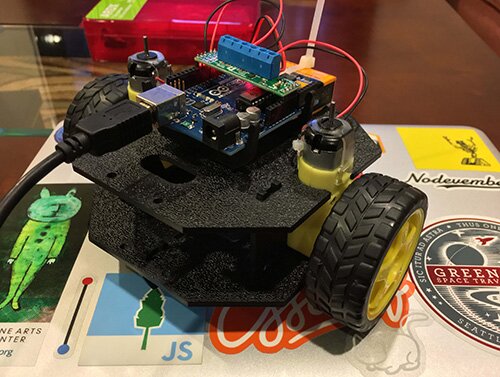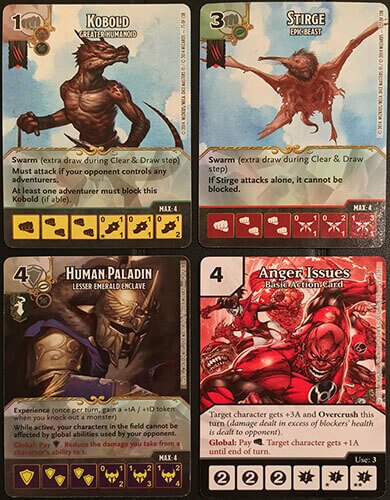Blogs about glassblowing
A Glassblower's Career Outlook.
5.5.2014
Let's examine the job prospects of one of my hobbies - glassblowing. Blowing glass is tough work. Even in Seattle's winters, it's hot sweaty work. It's a full shift of physical activity, requiring both heavy lifting and repetitive controlled movement. Glassblowing has a high degree of difficulty, and success depends on good teamwork and timing.
It's common for beginning glassblowers to pay to take classes, and for folks looking to get a foot in the door to intern for free or very cheaply before scoring paid work at the journeyman level. Most paid glassblowing work is done as independent contractor, with no guarantee of work or benefits.
Entry- to mid-level glassblowing work is competitive; there are always more glassblowers with free time than there are open spaces in shops. Within a glassblowing team, the successful entrant will be enthusiastic and attentive to the needs of the rest of the team. A production glassblower doesn't have off-hours work like responding to customer emails or preparing a sales report. But they commonly spend free time improving their skills by taking classes or doing independent work.
Seattle is a great city to be a glassblower. There is a multitude of schools and small studios which offer classes. There are also multiple production facilities which can be counted on to need a comparatively steady supply of glassworkers such as Glassybaby and Glass Eye Studios. Olympic Color Rods hosts a board with postings for jobs and equipment.
Glassblowing is a rock-star occupation. Very few glassblowers will become wealthy or famous like Chihuly or Marioni. Many glassblowers own and operate a studio (which is full of money-hungry equipment) as well as store to sell pieces, which means they are managing a small business in addition to making art.
Easter Egg Paperweight.
2.22.2014
 I made this paperweight during an April Blow Your Own event at Art By Fire in 2010. If you've ever wanted to try glassblowing, a quick "blow your own" or mini-class is a great way to test the waters: a professional will walk you through the entire creation of your own "shape of the month" in about 15 minutes. The next day or so, after it's cooled down, you get to take your new glass artwork home!
I made this paperweight during an April Blow Your Own event at Art By Fire in 2010. If you've ever wanted to try glassblowing, a quick "blow your own" or mini-class is a great way to test the waters: a professional will walk you through the entire creation of your own "shape of the month" in about 15 minutes. The next day or so, after it's cooled down, you get to take your new glass artwork home!
My goal with this piece was to put a lot of bubbles into it, and I still love the effect. The egg-like shape of the piece was done with an oval shaped block, as opposed to the more common round blocks.
As always, thanks to the husband for the photography.
Poxy Bowl, ca 2010.
11.6.2013
I made this bowl during a May 2010 class at Seattle Glassblowing Studio during a Beginner's II class. To this day, bowls remain one of my favorite forms to make.
 The pink spots are "ghetto murrini" - cane cut into discs and then warmed on a kiln shelf until they're hot enough to pick up with the bubble of the bowl. The white is a standard lip wrap that didn't quite get hot enough and came on thick and blobby.
The pink spots are "ghetto murrini" - cane cut into discs and then warmed on a kiln shelf until they're hot enough to pick up with the bubble of the bowl. The white is a standard lip wrap that didn't quite get hot enough and came on thick and blobby.
This technique is worth experimenting with again, and the pink and white color combination is always classy. As always, thanks to the husband for the photography.
The Perfect S'more.
9.24.2013
The perfect s'more is a subjective thing, but mine has a golden brown (but not burnt) marshmallow that's warm enough to melt the chocolate. Recently, I had an opportunity to do some good old-fashioned s'more making, and I noticed how similar s'more roasting is to glassblowing. Here are my tips for making a perfect s'more:
- Prepare your graham cracker and chocolate before working on the marshmallow (mise en place - it matters) - you won't have any time once the marshmallow is done. As a bonus, setting your chocolate by the fire will warm it up a little.
- Select the right spot in the fire. You want an largish enclosed area of hot coals (not flames); if your heating area is too small, the heat will be too intense. Ideally, find a place where you can apply heat at the back end of the marshmallow (near the stick) - which wouldn't otherwise get heated well.
- Rotate that marshmallow slowly and evenly. A straight stick helps. If you're lucky, you can rest the end of your stick on a log or rock to steady your turning.
- Keep your eyes on that marshmallow. When it gets all floppy, you know the inside is good and soft. Only when that happens should you pull it out of the fire and assemble your s'more.
Mothers' Day Paperweight.
5.16.2013
I made this paperweight during an Art By Fire Blow Your Own event in April of 2010. The colored core was (probably) made from shards of a failed piece at Art By Fire, which were preheated in a small kiln. I picked that up on a bitrod, and did a few rounds of shape and encase to create the final form.
 My favorite part of this piece is all of the bubbles; created by leaving divots instead of a smooth surface when dipping into the furnace for another layer of glass. There is a particularly lovely streak of teeny bubbles, and one large bubble in the center.
My favorite part of this piece is all of the bubbles; created by leaving divots instead of a smooth surface when dipping into the furnace for another layer of glass. There is a particularly lovely streak of teeny bubbles, and one large bubble in the center.
More blogs about glassblowing:
-
Icicle. — 7.8.2012
-
Olympic Color Rods. — 6.2.2012
-
Glassblowing Tools. — 3.20.2012
-
Blue Glass Pumpkin. — 10.31.2011
-
Brown Glass Pumpkin. — 10.10.2011
-
Purple Glass Pumpkin. — 9.26.2011
-
Christmas Sucky Bowl. — 9.6.2011
-
Cube Glass Paperweight. — 6.19.2011
-
World's Fanciest Butter Dish. — 4.11.2011
-
Tax Tips. — 3.30.2011
-
Mr. Ugly. — 3.9.2011
-
Potion Vase. — 1.17.2011
-
The Perfect Glass Pumpkin. — 10.25.2010
-
Applejack Daisy Tumbler. — 8.19.2010
-
Glass Pumpkin 2009 #3. — 7.18.2010
-
A Day In the Life of Dale Chihuly. — 7.12.2010
-
Glass Bud Vase. — 6.21.2010
-
Fluted Bowl with a Two Color Optic Twist. — 6.3.2010
-
Glass Pumpkin 2009 #2. — 4.29.2010
-
Two Tone Flower Glass Paperweight. — 3.31.2010
-
Glass Cactus Pumpkins. — 2.21.2010
-
Gaming For The Win. — 2.4.2010
-
Phoenix Mix Ornament. — 1.25.2010
-
New Glassblowing Shop. — 11.14.2009
-
Glass Work - First Half of 2009. — 10.27.2009
-
Nothing Lasts Forever. — 8.12.2009
-
Glass Sculpture. — 7.12.2009
-
My Globby Glass. — 6.24.2009
-
A New Hobby. — 5.24.2009

 The pink spots are "ghetto murrini" - cane cut into discs and then warmed on a kiln shelf until they're hot enough to pick up with the bubble of the bowl. The white is a standard lip wrap that didn't quite get hot enough and came on thick and blobby.
The pink spots are "ghetto murrini" - cane cut into discs and then warmed on a kiln shelf until they're hot enough to pick up with the bubble of the bowl. The white is a standard lip wrap that didn't quite get hot enough and came on thick and blobby. My favorite part of this piece is all of the bubbles; created by leaving divots instead of a smooth surface when dipping into the furnace for another layer of glass. There is a particularly lovely streak of teeny bubbles, and one large bubble in the center.
My favorite part of this piece is all of the bubbles; created by leaving divots instead of a smooth surface when dipping into the furnace for another layer of glass. There is a particularly lovely streak of teeny bubbles, and one large bubble in the center.




